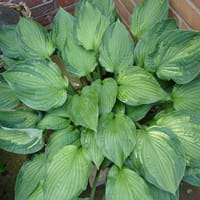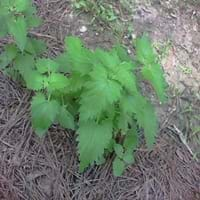Life Span
Perennial
Perennial
Types
Hosta ‘Independence’, Hosta ‘Island Charm’
Not Available
Habitat
Not Available
Dry areas, Roadsides, stream banks, Stream side, Waste areas
USDA Hardiness Zone
3-8
3-7
Sunset Zone
A2, A3, 1a, 1b, 2a, 2b, 3a, 3b, 4, 5, 6, 7, 8, 9, 10, 11, 12, 13, 14, 15, 16, 17, 18, 19, 20, 21, 22, 23, 24
1a, 1b, 2a, 2b, 3a, 3b, 4, 5, 6, 7, 8, 9, 10, 11, 12, 13, 14, 15, 16, 17, 18, 19, 20, 21, 22, 23, 24
Habit
Clump-Forming
Clump-Forming
Flower Color
White, Lavender, Ivory
White, Lavender
Flower Color Modifier
Bicolor
Bicolor
Fruit Color
Green
Sandy Brown
Leaf Color in Spring
Yellow, Green, Light Green
Gray Green, Gray
Leaf Color in Summer
Slate Gray, Steel Blue
Gray Green, Gray
Leaf Color in Fall
Yellow, Green, Light Green
Gray Green, Gray
Leaf Color in Winter
Light Green
Light Green
Leaf Shape
Heart-shaped
Arrowhead
Plant Season
Spring, Summer, Fall
Spring, Summer, Fall
Sunlight
Partial Sun, Partial shade, Full Shade
Full Sun, Partial Sun
Type of Soil
Clay, Loam, Sand
Clay, Loam, Sand
The pH of Soil
Acidic, Neutral, Alkaline
Acidic, Neutral, Alkaline
Soil Drainage
Average
Well drained
Bloom Time
Early Summer, Summer, Late Summer
Summer, Late Summer, Early Fall
Tolerances
Drought
Drought, Dry soil
Where to Plant?
Container, Ground, Pot
Container, Ground
How to Plant?
Grafting, Transplanting
Seedlings
Plant Maintenance
Medium
Low
Watering Requirements
Do Not over Water
Do Not over Water, Never Over-water, Requires regular watering, Water when soil is dry
In Summer
Lots of watering
Lots of watering
In Spring
Moderate
Moderate
In Winter
Average Water
Average Water
Soil pH
Acidic, Neutral, Alkaline
Acidic, Neutral, Alkaline
Soil Type
Clay, Loam, Sand
Clay, Loam, Sand
Soil Drainage Capacity
Average
Well drained
Sun Exposure
Partial Sun, Partial shade, Full Shade
Full Sun, Partial Sun
Pruning
Remove damaged leaves, Remove dead branches, Remove dead leaves
Prune if you want to improve plant shape, Prune in spring, Remove damaged leaves, Remove dead leaves
Fertilizers
All-Purpose Liquid Fertilizer
fertilize every 2-3 weeks while growing, fertilize in growing season
Pests and Diseases
Red blotch
Caterpillars, Leaf Hoppers, Nematodes, Spider mites
Plant Tolerance
Drought
Drought, Frost
Flower Petal Number
Single
Single
Fragrant Bark/Stem
No
Yes
Foliage Texture
Bold
Medium
Foliage Sheen
Glossy
Matte
Attracts
Hummingbirds
Flying insects, Insects, Spider Mites
Allergy
Not Available
Avoid during Pregnancy, Headache, Stomach pain, Vomiting
Aesthetic Uses
Beautification, Showy Purposes
Beautification, Landscape Designing, Showy Purposes
Beauty Benefits
Not Available
Not Available
Environmental Uses
Erosion control
Air purification
Medicinal Uses
Not Available
Arthritis, Cold, constipation, Fever, Insomia, Migraines, Upset stomach
Part of Plant Used
Whole plant
Whole plant
Other Uses
Used as Ornamental plant
Air freshner, Decoration Purposes, Employed in herbal medicine, Making Perfumes, Making Shampoo, Making Sweet Scented Oil, Medicinal oil, Used as Ornamental plant, Used for its medicinal properties
Used As Indoor Plant
No
Yes
Used As Outdoor Plant
Yes
Yes
Garden Design
Container, Edging, Feature Plant, Groundcover, Mixed Border
Container, Herb / Vegetable, Mixed Border
Botanical Name
HOSTA 'Darwin's Standard'
NEPETA cataria
Common Name
Hosta
Cat Nip, Catnip
In German
Hosta
Katzenminze
In Greek
Hosta
Είδος δυόσμου
In Portuguese
Hosta
catnip
In Polish
Hosta
Kocimiętka
Phylum
Tracheophyta
Magnoliophyta
Class
Liliopsida
Magnoliopsida
Order
Asparagales
Lamiales
Family
Liliaceae
Lamiaceae
Clade
Angiosperms, Monocots
Angiosperms, Asterids, Eudicots
Tribe
Not Available
Mentheae
Subfamily
Agavoideae
Nepetoideae
Number of Species
Not Available
Season and Care of Hosta and Catnip
Season and care of Hosta and Catnip is important to know. While considering everything about Hosta and Catnip Care, growing season is an essential factor. Hosta season is Spring, Summer and Fall and Catnip season is Spring, Summer and Fall. The type of soil for Hosta is Clay, Loam, Sand and for Catnip is Clay, Loam, Sand while the PH of soil for Hosta is Acidic, Neutral, Alkaline and for Catnip is Acidic, Neutral, Alkaline.
Hosta and Catnip Physical Information
Hosta and Catnip physical information is very important for comparison. Hosta height is 45.70 cm and width 45.70 cm whereas Catnip height is 980.00 cm and width 60.00 cm. The color specification of Hosta and Catnip are as follows:
Hosta flower color: White, Lavender and Ivory
Hosta leaf color: Yellow, Green and Light Green
Catnip flower color: White and Lavender
- Catnip leaf color: Gray Green and Gray
Care of Hosta and Catnip
Care of Hosta and Catnip include pruning, fertilizers, watering etc. Hosta pruning is done Remove damaged leaves, Remove dead branches and Remove dead leaves and Catnip pruning is done Prune if you want to improve plant shape, Prune in spring, Remove damaged leaves and Remove dead leaves. In summer Hosta needs Lots of watering and in winter, it needs Average Water. Whereas, in summer Catnip needs Lots of watering and in winter, it needs Average Water.





